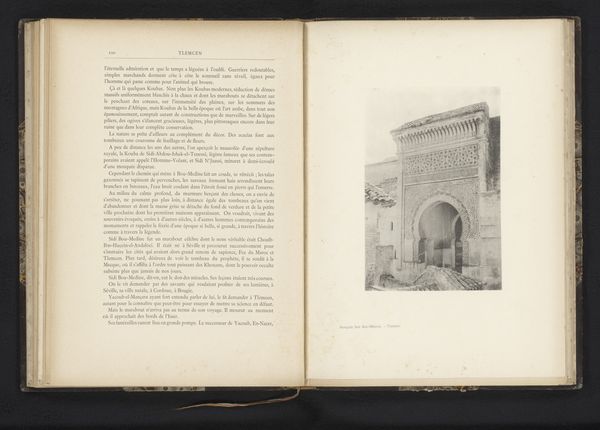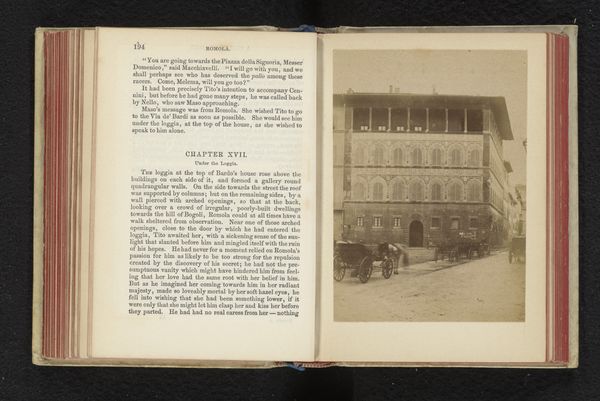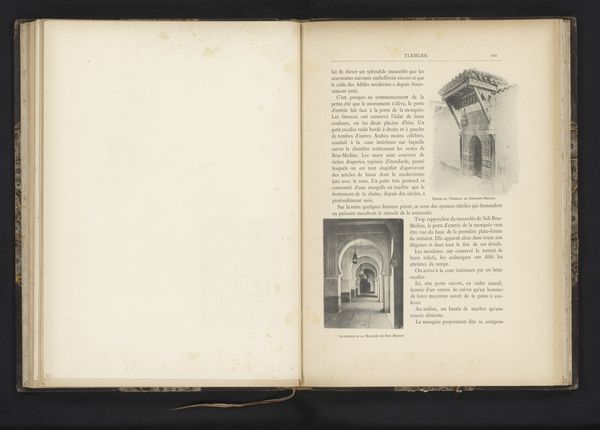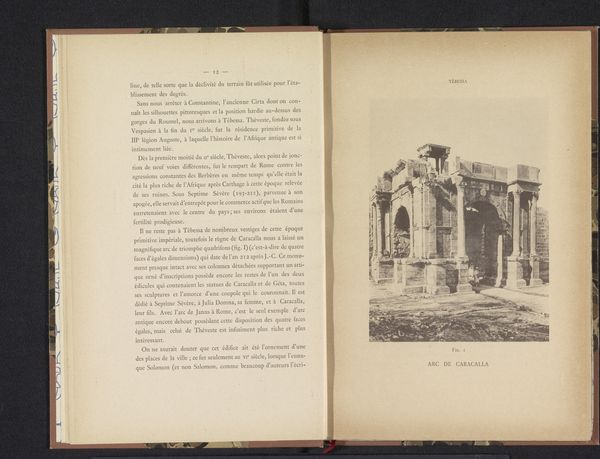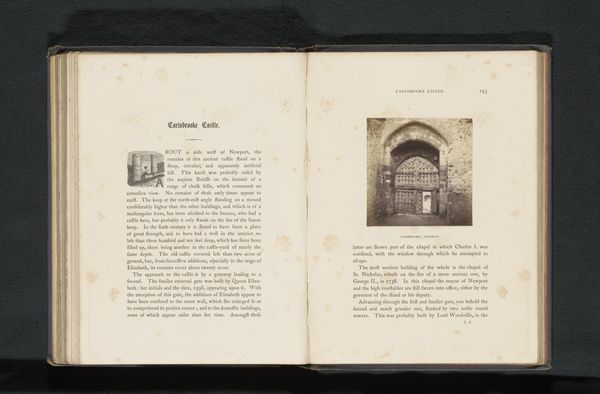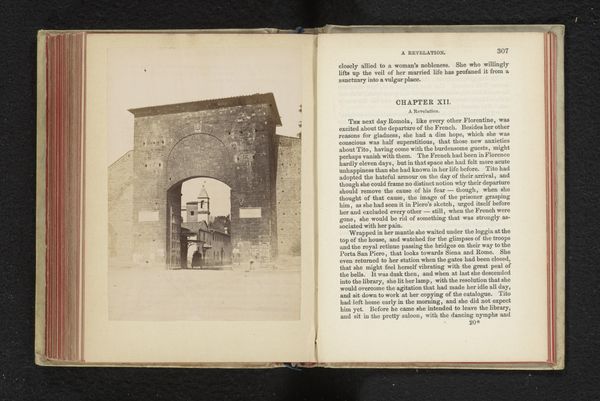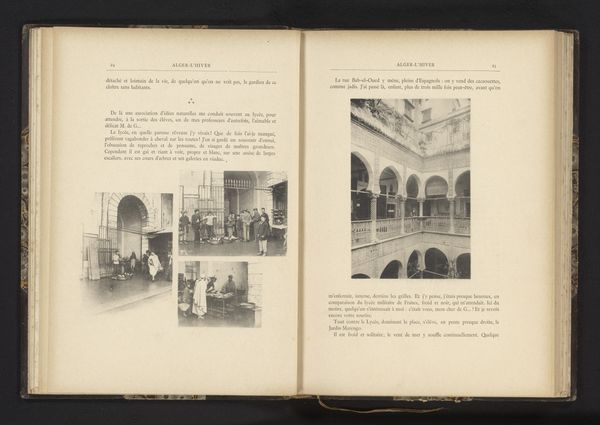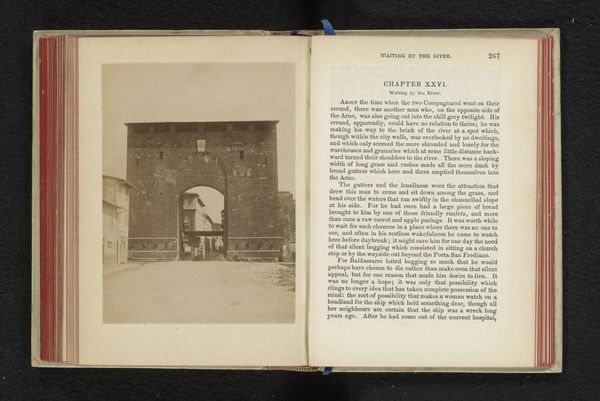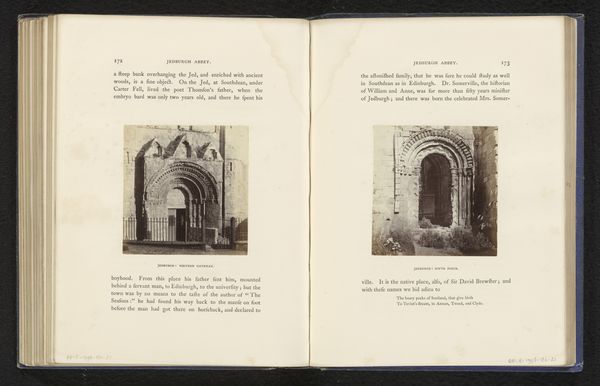
print, photography, gelatin-silver-print
#
16_19th-century
# print
#
landscape
#
photography
#
gelatin-silver-print
#
cityscape
#
italian-renaissance
Dimensions: height 124 mm, width 87 mm
Copyright: Rijks Museum: Open Domain
Curator: Look at this image! Here we have Giacomo Brogi's photograph, "Porta San Giorgio te Florence," captured sometime before 1863. The old city gate dominates the composition. Editor: It has such a stark, solemn presence. The stonework seems heavy and permanent, doesn't it? And the light, filtered through the archway, creates a deep, shadowed opening. What type of print are we seeing? Curator: This is a gelatin-silver print. I'm intrigued by the contrast between the man-made gate and the encroaching vegetation. It really speaks to the enduring presence of historical structures, doesn’t it? Consider the labor involved, the quarrying of the stone, the skilled construction—all now softened by time and nature’s reclaiming touch. Editor: Yes, I am drawn to the social context too. Photography at this time played a significant role in shaping perceptions of historical sites and urban development. How many of these prints did Brogi make? How widely were they distributed? Did Brogi, a known advocate for modernization, use these images to subtly comment on the city’s direction, holding up the "old" as Rome modernized? Curator: Good point. Photography served both documentation and promotion. Brogi certainly profited from these views as keepsakes and documentary resources for urban planners. It's a commercial relationship mediated by the rise of tourism and a growing appreciation for the Renaissance past. Editor: It's important to remember that these weren’t neutral depictions; they carried a cultural weight. The way this gate is framed emphasizes a certain historical narrative, one that the city—and its civic powers—sought to promote. How accessible was it, though? I am thinking about gender roles too; in most cases men are the art buyers. Curator: Undoubtedly. Brogi's work offers a multi-layered perspective. Through his skillful use of light and composition, he creates more than just a document—it is a constructed viewpoint shaped by his engagement with the prevailing cultural currents and the materials themselves. Editor: So, this seemingly simple image actually has quite a lot going on behind its stony facade. It holds so much in how it’s crafted, spread, and understood back in that day. Curator: Exactly! A snapshot of time, yes, but one deeply embedded in the forces shaping both the art world and the city itself.
Comments
No comments
Be the first to comment and join the conversation on the ultimate creative platform.
